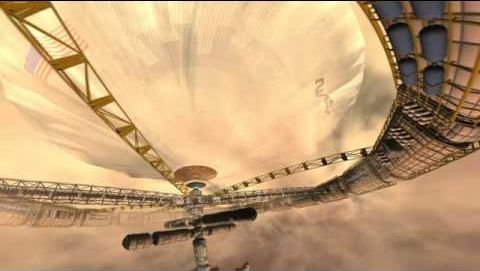For a planetarium program intended to show possible future NASA exploration directions, Home Run Pictures was tasked with creating plausible human habitats on the various planets and moons in the Solar System. Engineering concepts required understanding of the environments and the structures or spacecraft necessary for longer term human survival. Avoiding being too science fiction was difficult at times. The surface of Venus is a rough environment with temperatures and pressures at the extreme. But the dense atmosphere seems to allow the possibility of “floating” a space station hanging below some sort of blimp-like structure. An attempt at using what would look like modular structures, similar to what has been used with the International Space Station was implemented. A circular structure was used to keep the station in balance in the turbulent Venusian upper atmosphere with a long strut hanging down from the center to help stabilize the craft and provide mounting points for various experimental packages and docking ports for shuttles or exploratory probes. Small shuttles would drop into the upper atmosphere delivering cargo and personnel. When the station’s scientists desire to dive deeper into the Venus atmosphere for exploration, shuttles that lean more towards the submersibles used for Earth ocean exploration are used. The Venusian atmosphere is very dense and the pressure would crush anything but craft that are constructed like submarines with reinforced portholes instead of windows. Instead of using rocket power for maneuvering, the shuttle/submersible vehicles use large turbo-fan like engines. Everything needs to be constructed of cororsive-resistent materials to survive the acidic Venusian atmosphere. Scientists theorize that massive lighting events would be the norm and electronic and digital hardware would need to be insulated from the extreme electrical environment.










Comments are closed.